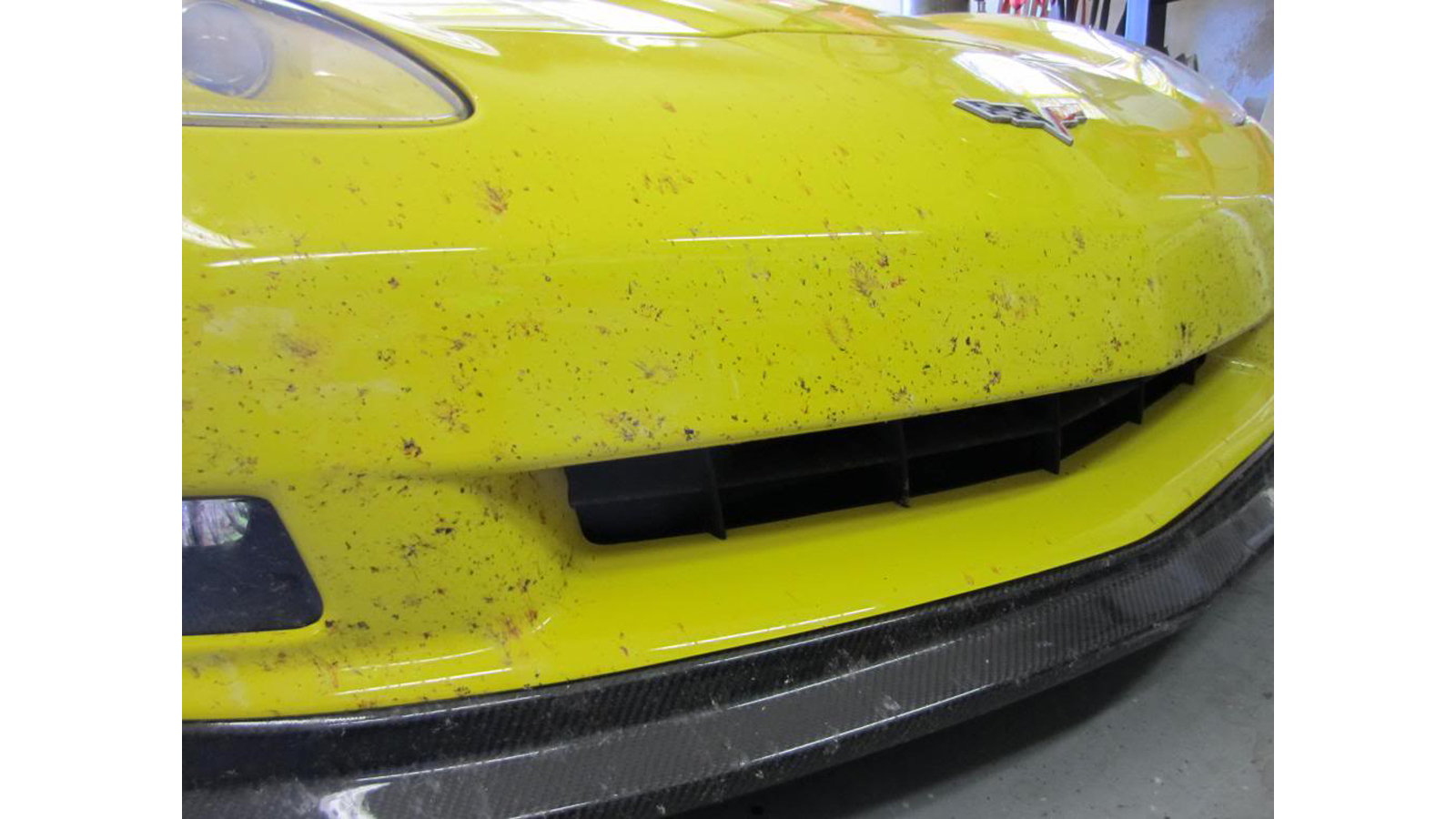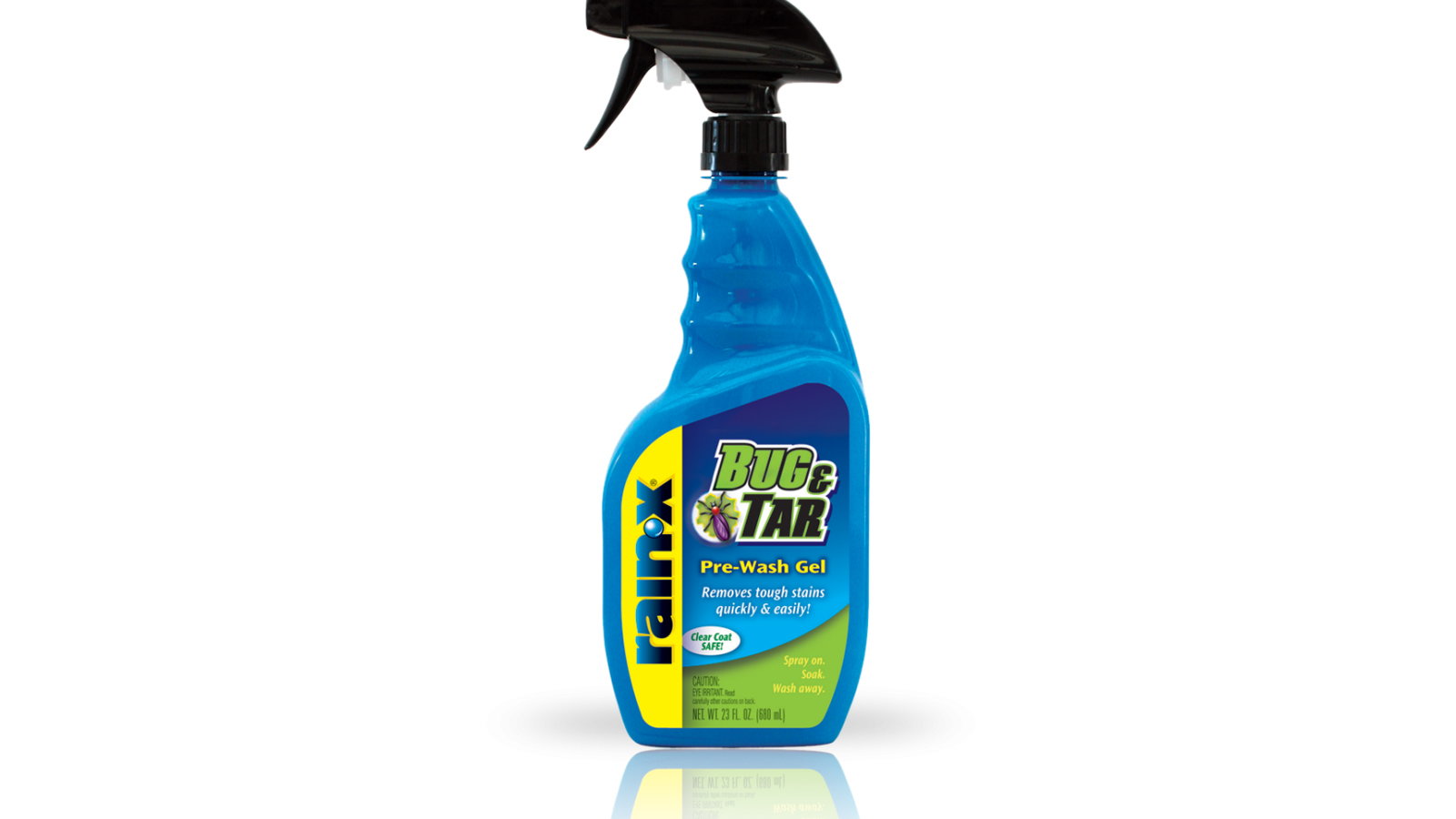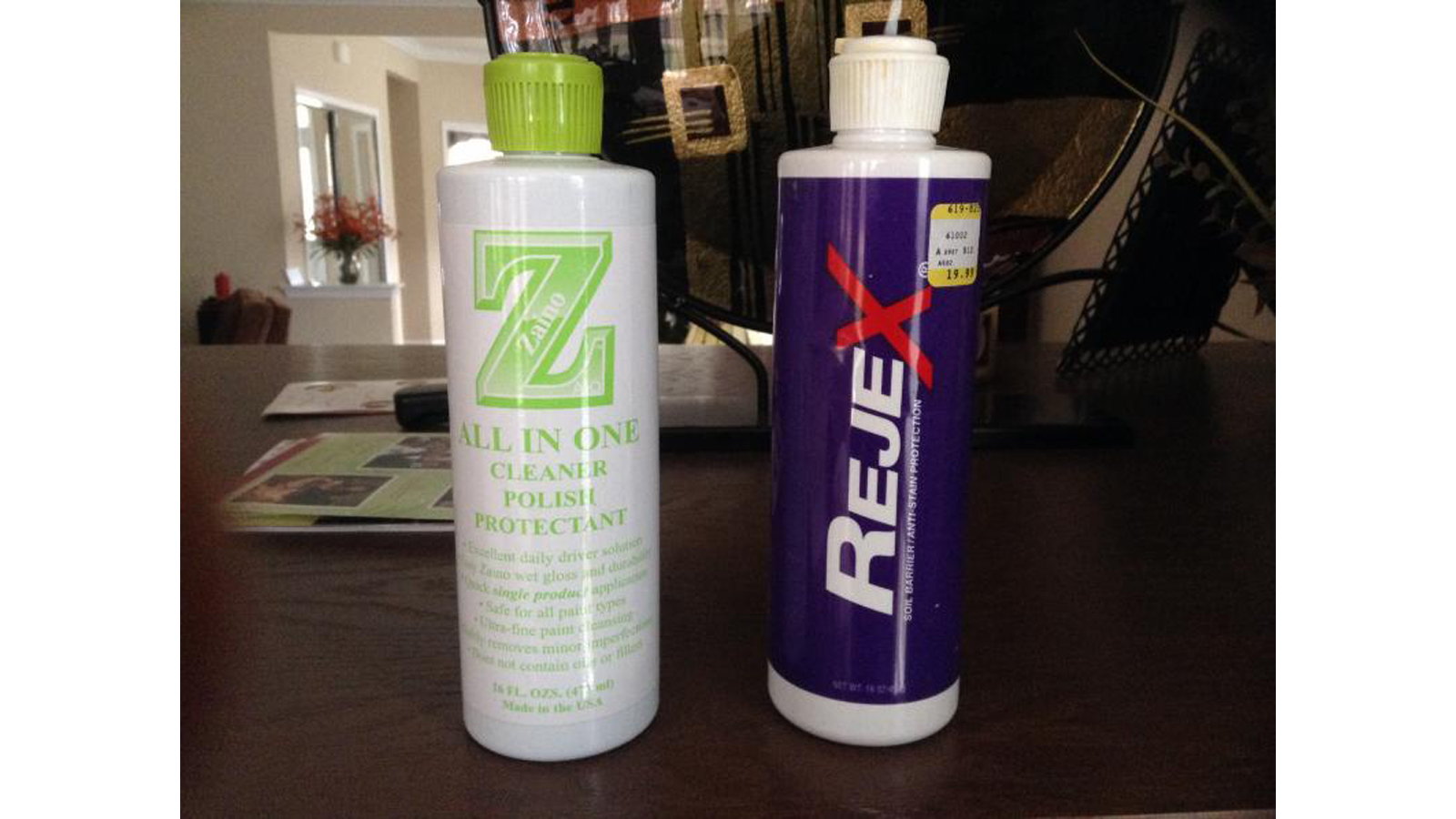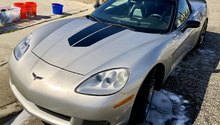Corvette: How to Clean Dead Bugs on Bumper
How can you spot a happy Corvette? By all the bugs on its nose. Here are some hints on how to "powder" your nose after a nice joy-ride.
This article applies to the C5, C6 and C7 Corvette (1997-current).
'Vettes like to be driven, but that low-slung front end is also is a great bug-catcher. A lovely summer evening's drive often turns into a rolling insecticide, with more gore on your car than in the last episode of "CSI" you saw. So, what's the best way to get them off without ruining your paint? Follow along for more information.

Materials Needed
- Old towels or scrap of indoor/outdoor carpet for initial soaking
- Bug sponge with mesh cover or car wash mitt
- A couple of buckets filled with water
- Microfiber towels for finish drying
- Dryer fabric softener sheets
- Bug & tar remover
- Car wash soap
- Wax and detailing spray
Step 1 – Assess the mess
Take a minute to look over your front end. How covered is the nose, and what kind of bugs did you run into? Some bugs are pretty nasty in that they have sulfuric acid that can etch paint if not cleaned off right away.

Pro Tip
Stay away from what's under the kitchen sink. Dishwashing soap like Dawn and cleaners like 409 or Simple Green will strip off waxes and sealants that you may want to stay in place. There's no sense creating more work for yourself than necessary.
Step 2 – Give it a good soaking
Chances are you've been on the road a while and that most of what's on there is dried on. Rinse the car off first, then fill a clean bucket with some hot water and dose it with car wash soap; dunk some old towels and drape them over the nose. Let them sit anywhere from a few minutes to a few hours depending on how heavily the bumper is encrusted. Make sure to keep the towels wet if leaving them on for an extended period of time; some owner's like to periodically hit them with a spray bottle filled with water and car wash soap. Wad up some to stuff into the air inlets, too, to get the vertical surfaces. One good tip from the Corvette Forum is to use pieces of indoor/outdoor carpet; it's heavier and not as apt to slide off the front end when soaked.

Pro Tip
Use several towels and drape them with the longest dimension running from front to back. If towels keep sliding off the car, use another wet towel and place it uphill from the one draped over the nose to help hold it in place.
Step 3 – Scrub
Grab a car wash mit or a bug sponge with a mesh cover and dunk it in the bucket of soapy water. Pull off the towels, wiping at the same time; use the bug spone for what's left and gently scrub the cover. Rinse the sponge or mit in a second bucket of water set aside just for this. There are some owners who recommend using dryer sheets like Bounce, but beware: the sheets are abrasive and if used dry can scratch paint, so make sure the cover is wet, dunk the sheet in water and be gentle with the scrubbing action. You can even use it on the windshield.

Pro Tip
Have a spray bottle with a mix of water and a cap-full of peroxide handy to spritz the bigger or harder-to-remove bugs. The peroxide will break down insect proteins. You can also use a cap-full of fabric softener in a bottle of water if you're using dryer sheets.
Step 4 – Chemical warfare
By now you should have most of the remains wiped off. But, if there are still some "bitter clingers" hanging on, it's time to break out the heavy artillery. There's a lot to choose from, and virtually everyone has a product or brand that they prefer or have an opinion about. Many like products like Rain Dance Bug Gel, others prefer RainX Bug and Tar Protective Shield, Turtle Wax Bug and Tar Remover, Wizzard Bug Release, Honda Cleaner/Polish, and even 409 or Simple Green. But before you open the can or bottle, read the label to see if it can be used with your paint/finish. Some cleaners have a petroleum distillate like kerosene in them, which could damage clear coats or softer paints.

Pro Tip
Bug and tar removers, like detergents mentioned previously, can also strip off wax. Test on a small area first to see if water still beads after cleaning.
Step 5 – Preventive maintenance
Once the bugs are cleaned off, wash and rinse the bumper to remove cleaner residue. If the water doesn't bead up, it's time to apply a good cleaner, followed by wax/polish. You may want to go over the area with a clay bar/lubricant before applying sealant, wax and polish for an additional level of cleaning. Several owners on the Corvette Forum highly recommend using RejeX or Zaino. You might want to carry a bottle of your favorite detail spray and a dedicated microfiber towel in the car so that you can spray-and-wipe the bugs off immediately after your drive.

Pro Tip
Plan on spending some more time up front than anywhere else. Keep a small kit in the car with a bucket, bug sponge, detail spray, microfiber towels and some kneeling pads.
Related Discussion, Site and Video
- Dead Bugs on Bumper Best Way to Clean Them Off - CorvetteForum.com
- Clean Insects Off a Car's Exterior - Wikihow.com
- Easy Way to Clean & Remove Dead Bugs From Your Car - Youtube.com






